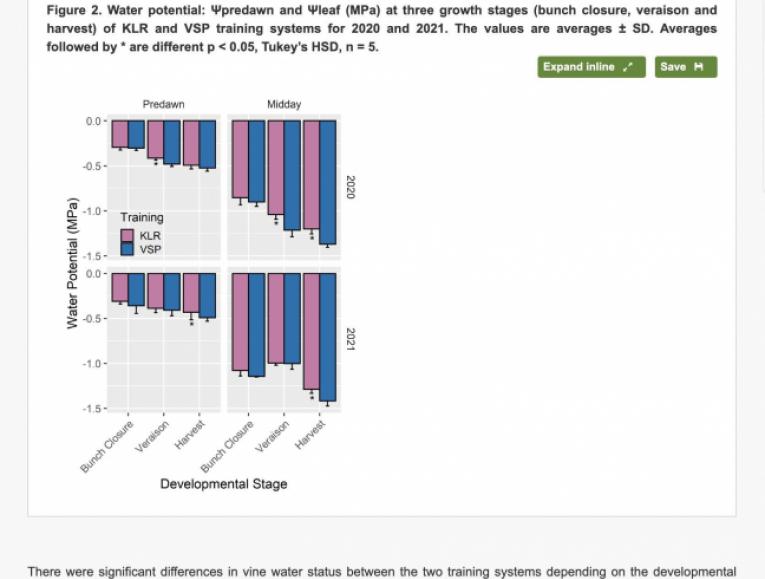T-Oinos winery, eight years later: quality and evolution
By Yiannis Karakasis MW
Eight years ago, in 2016, I first visited Tinos Island and was captivated by the thriving potential of T-Oinos Winery, which was on a promising journey to establish itself not only among Greece's premier wine producers but also to make its mark on the world stage. Today, this journey is marked by significant changes, major investments, and an unwavering commitment to producing exceptional terroir-driven wines. The transformation is evident in the winery's new facilities (more on that at the end of the article) and is deeply rooted in its vineyard philosophy and winemaking techniques.
T-Oinos Winery has steadily expanded its vineyard holdings, cultivating nearly 13 hectares. "There is potential to grow to 17 hectares soon," says winemaker Thanos Georgilas (pictured above), who works under the guidance of renowned top wine-consultant Stéphane Derenoncourt. Their primary focus remains on two key vineyards: Assyrtiko and Mavrotragano, with minor plantings of Avgoustiatis and Malagousia used solely for their two rosé wines, Mavrose and the new Clos Stegasta Rosé—the latter a blend of all four varieties.
Despite its expansion, production at T-Oinos remains tiny, almost microscopic. "We never compromise on quality," states Georgilas. Even in an outstanding vintage, production is restricted to 25,000 bottles. In 2023, output was deliberately reduced to less than 20,000 bottles," he adds. With the harvest for the 2024 vintage having just commenced—20 days earlier than usual—production is anticipated to decrease by more than 30%, underscoring the stringent measures they undertake to ensure high standards despite the challenges.
In terms of style, both Assyrtiko and Mavrotragano wines persistently pursue greater elegance. Georgilas notes that T-Oinos has redefined its use of oak, aiming for ETP: Energy, Transparency, and Purity. This involves meticulous work in the vineyard, reduced use of oak, and a stronger focus on the clarity and drive of the fruit. Indeed, each new release increasingly showcases mineral characteristics and terroir expression, as evidenced by the Clos Stegasta Assyrtiko 2022 and Mavrotragano 2020.
T-Oinos offers six key labels with no current plans for additional ones. Assyrtiko and Mavrotragano are presented in the Clos Stegasta and Rare versions, complemented by two rosés: Mavrose and Clos Stegasta Rosé. The grapes are sourced from four different vineyards:
- The Stegasta vineyard, spanning 8 hectares (pictured below)
- The Rassonas vineyard, 2 hectares
- The Ag Dimitrios vineyard, covering 1.5 hectares
- The Sparveri vineyard, at 2.5 hectares
Navigating extreme conditions has emerged as a significant challenge for T-Oinos, with climate change posing a constant threat. Drought, in particular, has been a persistent concern. A decade ago, the average annual rainfall was around 600 mm; now, it has dwindled to just 300 mm. "Here, conditions are extreme. We need to reconsider everything," says Georgilas, highlighting the urgency and adaptability required to maintain their high standards. To combat these challenges, T-Oinos has implemented innovative solutions, such as establishing rainwater collection systems and drilling for groundwater. Adjustments in pruning techniques and reducing leaf area are considered to slow the ripening process. Additionally, there are thoughts to decrease vine densities, which currently stand at 11,000 vines per hectare. These measures aim to sustain their vineyards and ensure the continued production of high-quality grapes despite the increasingly harsh conditions.
This ongoing project culminates in a new state-of-the-art winery, designed in the shape of the T-Oinos logo, which incorporates green and geothermal energy principles and is fully integrated with the surrounding terrain. The projected completion date for this cutting-edge facility is 2026.
The Clos Stegasta Assyrtiko and Rare Vertical
Clos Stegasta Assyrtiko (first released in 2009)
2023, acid-driven and very mineral both on the nose and palate. It has a sword-like structure, refined and textural, with lemon and marzipans on the nose. Pure with dart-like precision, detailed and still very young. ****
2022, shows more aromas along with yeasty complexity and garrigues in the background. Layered and dense on the palate with perfect integration of all structural components. It's a better vintage than 2023, and it shows. ****+
2021, showing generosity and evolution with honey and smoke aromas around a pear and apricot core with marzipan notes. Just a touch of oxidative notes adding complexity. Drink now and for the next 2-3 years. ****
2020, a lick of oak-derived vanilla, smoky, nutty, and still phenolic and grippy in a way. It is vibrant, mineral, and energetic on the palate, but it still needs time to unfold. From a late budding vintage like 2022, a wine for the long run. ****+
2019, it has a lovely floral nose and some toasted hazelnuts on it. Drinking superbly now shows a long finish and some oak influence, including a part of unreleased Rare in the cuvee. It is a Puligny style and a fascinating wine to follow across the years. ****+
2018 Subtle and elegant at its peak of maturity. From a warm vintage such as 2021. To drink now. ****
Rare (first vintage 2017)
2022 , a new, very delicate, and mineralic approach with no new oak influence, creamy and focused. It needs time to unfold its virtues but ticks everything. This is a hugely complex that is all about texture and layers upon layers. ****+
2020, is my top wine from the lineup and the approach I endorse for Rare. A Meursault style, rich and generous yet athletic and firm with a never-ending finish. *****
2018, evolved and zesty with kum quat complexity, creamy character and fine elegance. ****







